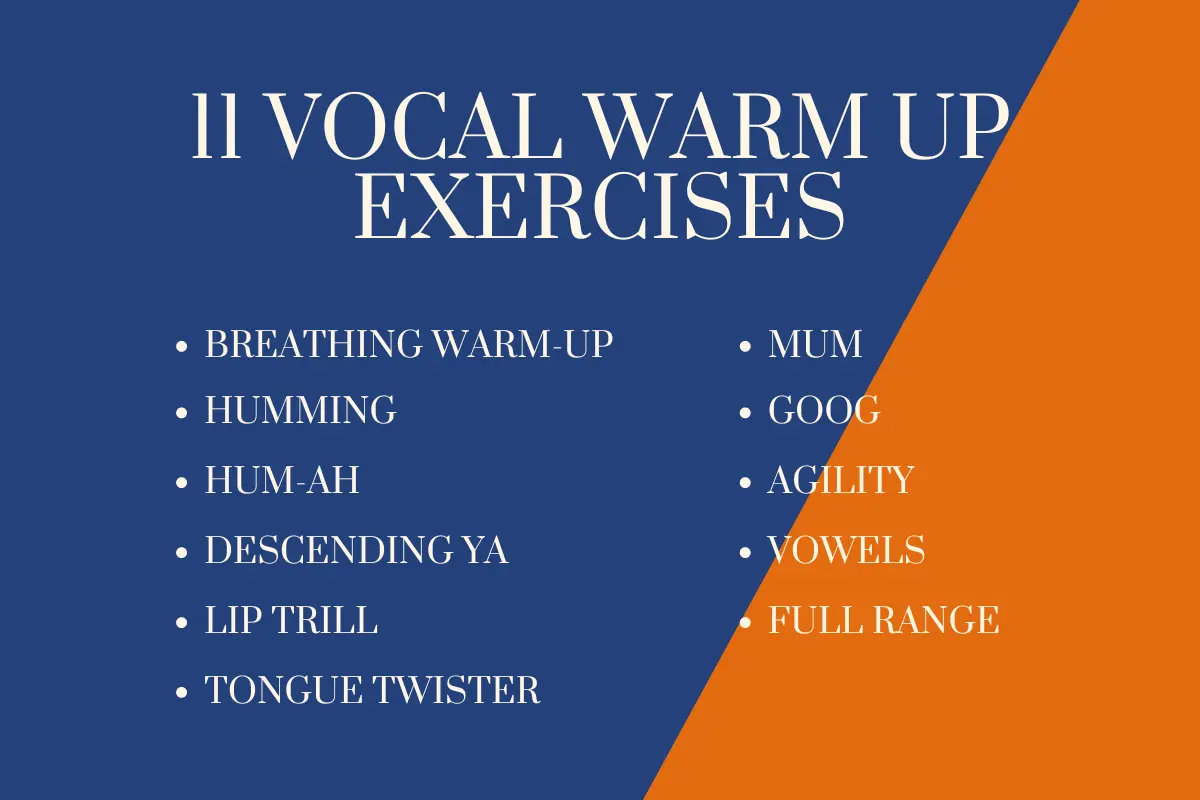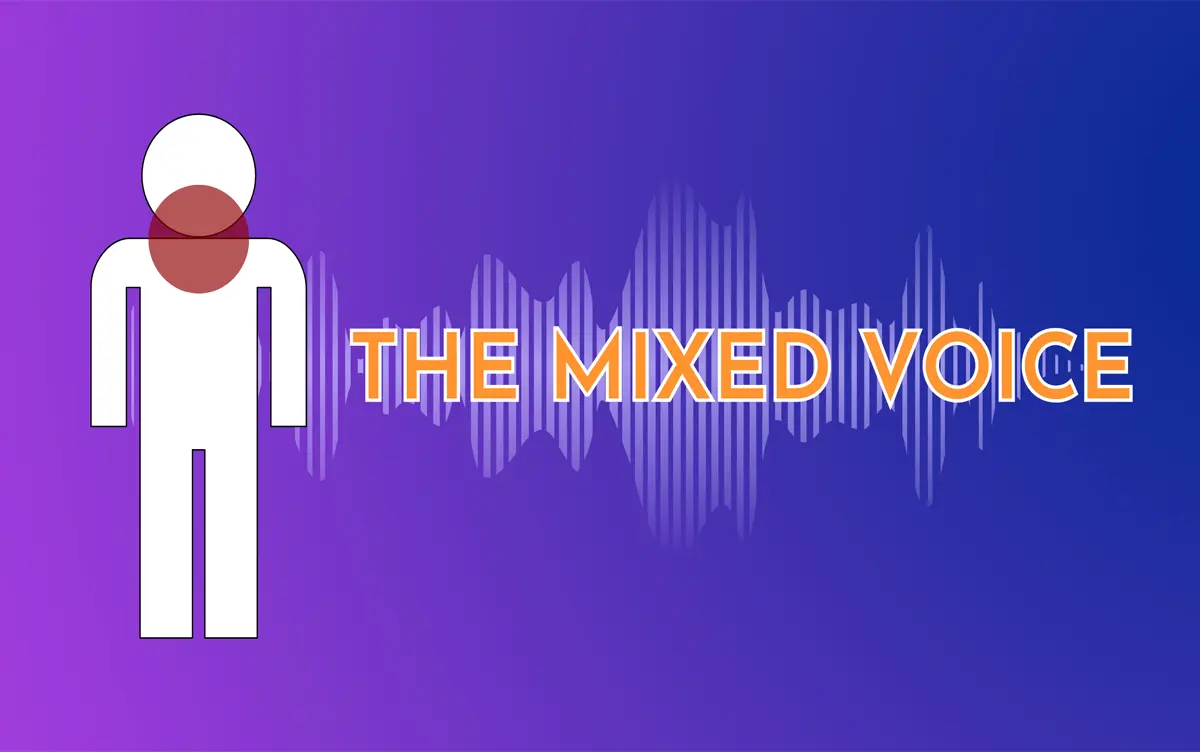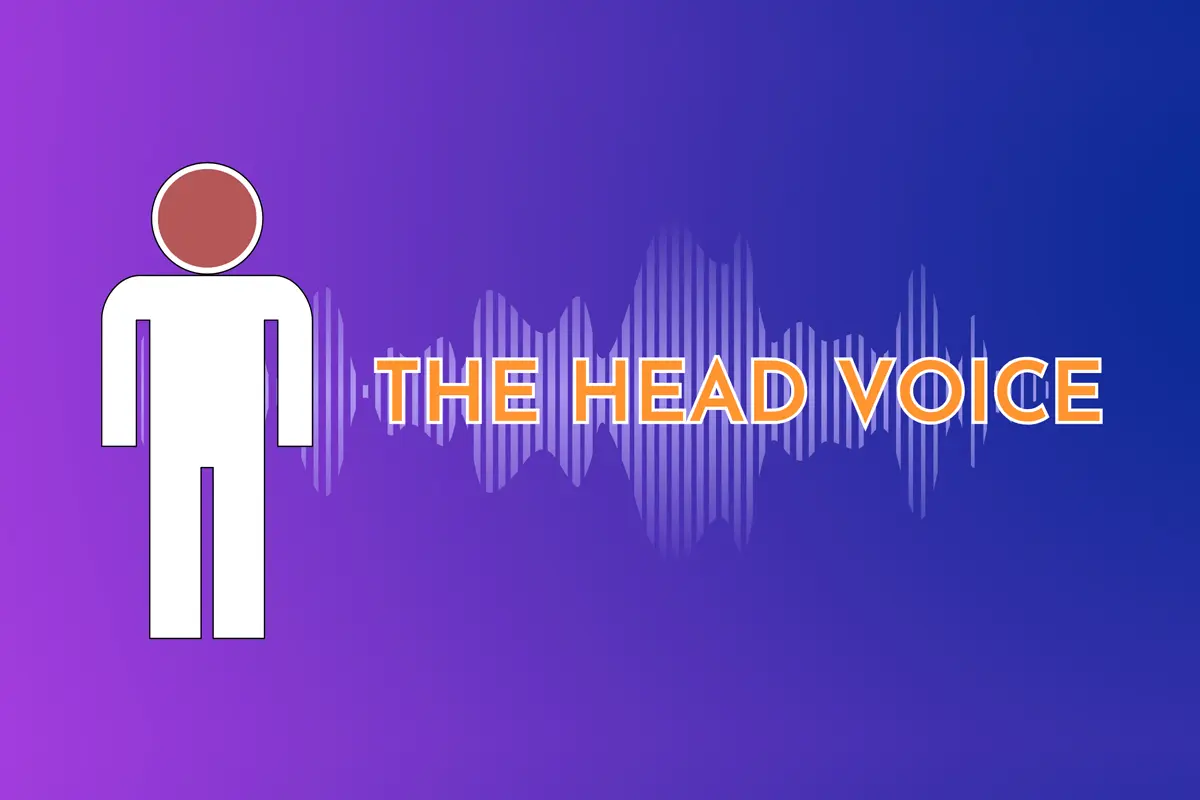As a singer, your voice is your prized instrument. Just like with any other instrument, you need these vocal warm up exercises before hitting those notes.
Trust me, I’ve learned this the hard way after too many painful vocal strain episodes early when I started singing again.
These days, I’m committed to my warm-up routine. Like a must-do ritual before a show, just like putting on your running shoes before a marathon.
In 2024, voice teachers or vocal coaches are mixing up old-school warm-up routines with some cool new methods.
Think of it like upgrading your vintage guitar with some modern tech. You get the classic richness plus optimized precision and power. That can take your singing voice to new heights.
This post covers 11 warm-ups routine that will have you sounding like an angel (or devilish diva if that’s your vibe!) on stage.
Why Warm-Ups Are a Singing Superpower
Skipping warmups is essentially trying to run a race without stretching first – a sure way to pull a vocal muscle. Warming up does so much more than just preventing injury though.
Like giving your vocal folds their morning coffee. Energizing them, widening their range, and helping them hit every riff with flexibility and control.
Consistent warmups can even add years to your singing career by keeping those tiny muscles in tip-top condition.
Let’s get into 11 awesome warm ups in 2024. Consider this your exclusive backstage pass to elite-level vocals!
20 Minutes Vocal Warm Up Exercises

1. Breathe Like a Boxer
First, we’ve got to supply our singing machine with some premium fuel: proper breathing technique. (You might want to learn about breathing exercises for singers)
Start pulling air deep into those bellies on the inhale, letting your abdominal wall expand. Then exhales with a “SH-SH-SH-SH” and hissing (TSS) sound – your vocal version of a boxer’s forceful breath.
Repeat the exercise 3 or 4 times. You should feel those intercostal rib muscles getting a workout too. With solid breath support, you’ll be able to churn out those lyrics for hours!
Here’s an example
2. Humming
This classic warmup is as simple as it is effective. Start by gently humming on a comfy middle note, lips sealed. In this practice, we also start using musical scales to help tune our pitch sensitivity.
Then gradually glide up and down your range, nice and smooth like a hummingbird gracefully hovering.
Make sure you can feel that soft buzzing around your nose and lips – that’s the vocal cords joining the warm-up party!
Here’s an example
3. The HUM-AH Routine
Find your happy HUM – that effortless “MMMMM” sound you make when your morning coffee hits just right. Once you’ve got that buzz going, smoothly morph it into a wide-open “AAHHHH” vowel on the same pitch.
Keep your breath flowing like a gentle stream as you repeat the hum-to-ah cycle. Gently wake those cords and get them revved up for some serious vocal performer.
Here’s an example
4. Descending Vocal Scale on YA
Next up, we’ve got an exercise that will get your mouth working – literally! Taking a smooth descending scale, we’ll sing “ya-ya-ya” in a relaxed chest voice. You’ve got to let that jaw go full unhinged shark mode on every single note.
Don’t be shy – this is your chance to channel all those years of impressive yawning skills into some serious vocal warmup action!
Here’s an example
5. Motorboat those Lips
This warm up makes me feel like I’m doing an impression of a vintage car’s engine turnover. But instead of imitating machines, we’re getting those lips revving like a high-performance vocal instrument.
Put a finger on both of you cheeks, then blow with an energetic “brrrr” for that delightful motorboat sound.
As you sustain the buzz, try gently pitching it up and down to stretch those vocal muscles.
Once you’ve got that motorboat humming, smoothly gliding between your highest and lowest registers while maintaining the buzz.
A deceptively simple warm-up that delivers great results for activating your lips, facial muscles, and breath flow. Crucial components for clean articulation and resonance.
Pretty soon you’ll be able to trill those “r”’s and nail every tongue-twister in the vocal book!
Here’s an example
6. Activate Your Tongue Twister
This tricky tongue twister of an exercise puts those lingual muscles through their paces. First, place the tip of your tongue up towards the roof of your mouth.
Then start exhaling with a rolled “rrrrr” sound, almost like imitating a purring cat or idling motorcycle engine.
The tougher part is keeping that trill going while gliding up and down your range. You can use the same vocal scale from the lip trill exercise. It may feel a bit silly at first, but stick with it. This tongue twisters routine will have you articulating words crisply in no time!
7. Expand Your Vocal Range With MUM
Now that your vocal cords are nice and limber, we’re going to take it up a notch with the “MUM” extended arpeggio scale.
Repeating the word “mum” in your comfiest middle range, start sliding up and down a series of arpeggiated triads. Go low, go high, exploring all those notes in your range.
Here’s an example
8. The Minor Arpeggio GOOG
Keeping things interesting, we’ll work through a haunting minor arpeggio pattern using the strange and wonderful word “GOOG.” I know, it sounds like something your computer makes when it’s in a mood. But stay with me here!
On each “GOOG,” try to aim for precision pitching while maintaining a rich, full tone. This is an advanced warm-up routine. Because it is more challenging to do.
Here’s an example
9. Vocal Agility Exercise
Now it’s time for our vocal agility workout. We will improve our vocal agility and at the same time get your tongue and jaw moving, by using a descending scale. Then we combined it with vowel combinations – “ME-A-YA”
Here’s an example
10. Full Range Exercise
Now that we have warmed up all our vocal registers, it’s time to take the exercise to the next level. Let’s do a fun exercise that works on your full range, focusing on vowels “ME-A-YA-OH-OO”.
Here’s an example
11. The Last Vocal Scale
Now it’s time to take it for a full test drive! This exercise will soar through your chest, mixed, and head voices without taking a single break. Keeping your vocal support steady and making those transitions smooth is super important here.
If any of the notes become uncomfortable, please stop immediately, don’t try to force it to reach your highest note.
Here’s an example
The Vocal Cooldown

After you’ve worked those pipes hard with all those vocal exercises. Now it’s time to dial it back and treat your voice to some pampering relaxation.
Making sure you cool down properly is important to keep your vocals in good shape and prevent any strain or tiredness. Here are some cooldown techniques to incorporate:
- Repeat Your Faves: Go back through some of the more gentle exercises that felt especially good, like the soothing hum-ahs or siren slides. Recreate that freedom of vibrational flow.
- Take a Vocal Relaxation: Lay on your back and let your breath move through an open, relaxed throat and mouth. No forcing sound, just release any lingering tensions.
- Steam It Out: Treat yourself with steamy goodness by running a hot shower and sitting in the bathroom as the steam moisturizes your vocals. You can even do some light hums to loosen things up.
- Stay Hydrated: Sip on some smooth herbal tea or snack on juicy fruits like berries, citrus or melon. Your voice will thank you, when you stay hydrated. But avoid too much dairy products, please.
Precautions or Common Mistakes To Avoid
While warming up is a fun process, there are some important details to pay attention to. Avoiding these common pitfalls will keep your vocals happy and healthy:
- Don’t Overexert: If any exercise causes strain, back off immediately. Never push through vocal discomfort – that’s asking for damage. Just don’t strain your voice. Those throat muscles will thank you
- Keep it Supported: Maintain engaged breath support throughout every rep. Sloppy warmups done on empty air can instill bad habits.
- Loosen Your Grip: Make sure your jaw, tongue, and facial muscles aren’t carrying unnecessary tension. An overly clenched face will constrict your sound.
- Listen to Your Voice: Be aware of how your voice responds to different exercises. If something constantly feels off, find an alternative that agrees with you better.
- Start Simple: If you’re new to warmups, take it easy at first. Getting the hang of the basics sets you up with a solid base to build on as you go along.
But, the biggest mistake is skipping warm-ups altogether! Treat your precious instrument with the conditioning and care it deserves.
So there you have it singers. 11 most-effective vocal warm up exercises to get your voice in great condition! (Here’s detailed guide on learning how to sing)
With patience and mindfulness, you’ll be well on your way to, high note-nailing, audience-wowing vocal prowess!
Happy singing!





